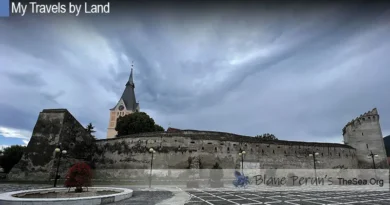Crete Greece
Table of Contents
The Best Things to Do and See in Crete
Unlike many other islands surrounding Greece, Crete is one of the largest and most impressive places you can visit. You can schedule a month-long vacation here and still not even come close to running out of awesome places to explore and things to see.
First of all, the island is home to the beautiful Beaches of Chania, which are surrounded by stunning mountains, pristine, shallow lagoons and crystal clear waters. Moreover, Chania’s old town is considered one of the most beautiful places to explore on the entire island.
If you’re interested in recent or ancient Greek history, you’ll love the Turkish architecture in Rethymnon and the remarkable ancient sites at Knossos, which is only 11km away from the capital of Heraklion. The most imposing place to visit here is the well-known Minoan Palace of Knossos, which is one of Greece’s most important historical landmarks.
Crete: The Cradle of European Civilization
Overview
Crete, the largest island in Greece and the fifth largest in the Mediterranean, is more than just a popular tourist destination. It’s a tapestry of ancient history, natural beauty, and a hotbed of culture that has left an indelible mark on European civilization. Strategically located at the crossroads of Africa, Asia, and Europe, its significance is evident in its rich heritage that stretches back thousands of years.
Geography and Climate
Crete spans over 8,300 square kilometers and is characterized by its diverse topography. From the idyllic beaches of Elafonisi to the snow-capped peaks of the White Mountains, the island’s landscapes are as varied as they are breathtaking.
Temperature: Crete boasts a Mediterranean climate. Summers are hot and dry with an average temperature hovering around 30°C, while winters are mild.
Flora and Fauna: The island is home to unique species, some of which can’t be found anywhere else in the world. The Kri-kri, a wild goat, is native to Crete and has become one of its symbols.
Historical Significance
Minoan Civilization
Crete’s golden age was under the Minoan Civilization, which flourished between 2700 B.C. and 1420 B.C. The Minoans were known for their advanced art, architecture, and even a writing system known as Linear A.
Knossos Palace: The most significant Minoan site, it offers a glimpse into the sophisticated life of ancient Crete. Remarkably advanced for its time, the palace had plumbing systems and intricately designed frescoes.
Byzantine, Venetian, and Ottoman Eras
Post the Minoan era, Crete saw a series of conquests. Each conqueror, be it the Byzantines, the Venetians, or the Ottomans, left their unique stamp on the island, making it a melting pot of cultures.
Chania and Rethymno: These cities, with their fortified walls, old harbors, and narrow lanes, are reminiscent of the Venetian influence on Crete.
Modern-day Crete
Today, Crete is a blend of ancient traditions and modernity. Its cities are bustling with activity, but a short drive can take you to quaint villages where time seems to stand still.
Economy: Tourism plays a pivotal role, but Crete is also known for its agriculture, notably olive oil production.
Culture: Cretan music and dance are integral to the island’s identity. The lyre is a common instrument, and traditional dances like Pentozali capture the spirit of Crete.
Cretan Cuisine
An integral part of the Mediterranean diet, Cretan cuisine is a testament to the island’s rich biodiversity. Dishes are often prepared with fresh, local ingredients like olive oil, herbs, and cheese.
Notable dishes:
- Dakos: A rusks-based dish topped with tomatoes, mizithra cheese, and olives.
- Kalitsounia: Sweet or savory pies filled with cheese or greens.
Concluding Thoughts
Crete, with its millennia-old history, diverse landscapes, and rich culture, stands as a testament to the resilience and creativity of its inhabitants. A visit promises not just scenic beauty but also a deep dive into a heritage that has shaped European civilization.
Finally, for the best food, wine and countryside scenery, you should definitely check out the village of Argyroupolis, a true hidden gem of a town at the heart of Crete, surrounded by scenic, tall mountains, natural springs and beautiful, lush valleys.




